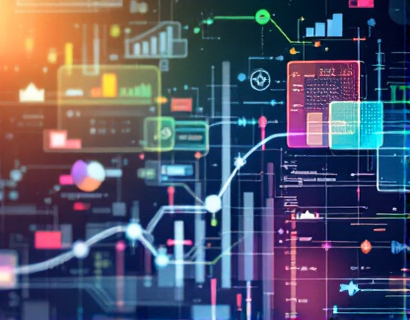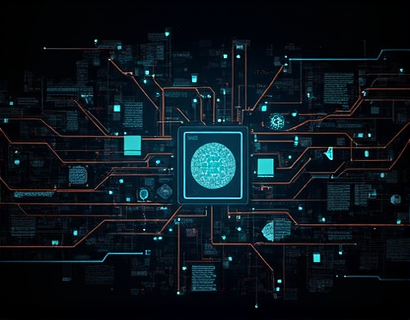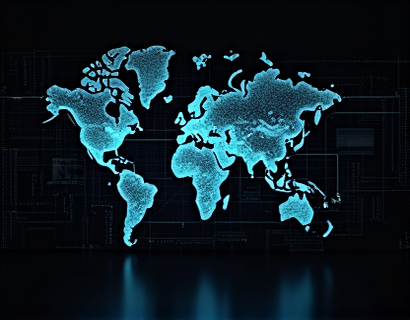AI-Driven Mental Health Insights: A Safe and Comprehensive Resource
In recent years, the integration of artificial intelligence in mental health services has opened new avenues for providing accurate, safe, and accessible information to a diverse audience. This article explores how AI-driven tools are revolutionizing the way professionals, students, and enthusiasts access mental health resources. By leveraging advanced algorithms and natural language processing, these tools offer specialized insights into mental health services and industry trends, ensuring that the content is verified and suitable for all ages.
Understanding the Role of AI in Mental Health
The mental health landscape is complex and ever-evolving, making it challenging for individuals to navigate the vast array of resources available. AI-driven chatbots and virtual assistants play a crucial role in this context by providing timely, accurate, and personalized information. These tools are designed to understand user queries, offer relevant insights, and guide users to appropriate mental health services. The use of AI in mental health is not just about automating tasks but about creating a supportive and informative environment that caters to the diverse needs of the population.
Ensuring Content Verification and Safety
One of the primary concerns when using AI for mental health is ensuring the accuracy and safety of the content provided. Reputable platforms employ rigorous content verification processes to guarantee that the information is up-to-date, evidence-based, and comes from credible sources. This is particularly important for sensitive topics such as mental health, where incorrect information can have serious consequences. By implementing strict verification protocols, these AI tools build trust with their users, making them reliable sources of information.
Tailoring Content for a Diverse Audience
The beauty of AI-driven mental health resources lies in their ability to cater to a wide range of users, from children and students to professionals and mental health enthusiasts. Each group has unique information needs and levels of understanding, and AI can adapt to these differences seamlessly. For instance, content for children and students is designed to be age-appropriate, using simple language and relatable examples. In contrast, professionals and enthusiasts can access more detailed and technical information, including the latest research and industry trends.
Content for Children and Students
For younger audiences, the content is carefully curated to be both educational and engaging. Topics such as understanding emotions, recognizing signs of stress, and basic coping strategies are presented in a way that is easy for children and students to grasp. Interactive elements like quizzes and games can make learning about mental health fun and interactive. The AI chatbot can answer questions, provide reassurance, and direct users to additional resources as needed. This approach not only educates but also helps in destigmatizing mental health issues among young people.
Content for Professionals
Professionals in the mental health field require access to comprehensive and cutting-edge information to provide the best possible care. AI-driven tools offer in-depth articles, research papers, and case studies that cover a wide range of topics, from diagnostic criteria to treatment modalities. The chatbot can also provide updates on industry trends, new therapeutic approaches, and policy changes. For healthcare professionals, the ability to quickly find and verify information is invaluable, enhancing their ability to make informed decisions and stay at the forefront of their field.
Content for Mental Health Enthusiasts and Educators
Mental health enthusiasts and educators form a vital part of the community that benefits from AI-driven resources. These individuals often seek to deepen their understanding of mental health issues and share this knowledge with others. The AI chatbot can offer detailed explanations of psychological concepts, discuss the impact of mental health on various aspects of life, and provide guidance on how to support loved ones. For educators, the chatbot can suggest curriculum ideas, teaching strategies, and resources to integrate mental health education into their classrooms.
Interactive AI Chat Interface
The AI chat interface is a cornerstone of this platform, designed to be user-friendly and intuitive. Users can interact with the chatbot through natural language, asking questions and receiving detailed responses. The chatbot is equipped with advanced algorithms that enable it to understand context and provide relevant and accurate information. Whether a user is seeking advice on managing anxiety, looking for local therapy options, or wanting to learn about the latest mental health research, the chatbot is there to help.
Specialized Information on Mental Health Services
One of the key features of the AI chatbot is its ability to provide specialized information on mental health services. Users can inquire about different types of therapy, such as cognitive-behavioral therapy (CBT) or dialectical behavior therapy (DBT), and receive explanations of how these therapies work and when they might be appropriate. The chatbot can also offer insights into the qualifications and credentials of therapists, helping users make informed decisions when seeking professional help. Additionally, it can provide information on support groups, hotlines, and other community resources.
Industry Trends and Innovations
Staying informed about industry trends and innovations is crucial for professionals and enthusiasts alike. The AI chatbot can provide updates on emerging treatments, technological advancements, and policy changes that impact the mental health field. For example, it can discuss the rise of teletherapy, the integration of AI in diagnostic tools, and the growing emphasis on mental health in workplace wellness programs. By keeping users informed about these developments, the chatbot helps them stay current and adapt to the evolving landscape.
Creating a Secure and Engaging Environment
Creating a secure and engaging environment is paramount for any platform dealing with mental health. The AI-driven tool ensures that all interactions are private and confidential, respecting user privacy and building trust. The chatbot is designed to be empathetic and supportive, providing a safe space for users to express their concerns and seek guidance. This approach not only enhances user experience but also encourages more people to engage with mental health resources.
Child-Friendly Features
For children and students, the platform includes additional features to ensure a safe and supportive environment. The chatbot can detect when a user is a child or student and adjust its responses accordingly. It avoids discussing sensitive topics in detail and focuses on providing reassurance and basic information. Parents and educators can also access resources to help them support young people in their care, fostering a collaborative approach to mental health education.
Engagement and Community Building
Beyond providing information, the AI chatbot plays a role in building a community around mental health. Users can connect with others who share similar experiences, fostering a sense of belonging and support. The chatbot can facilitate discussions, share success stories, and highlight community events or webinars. This community aspect is particularly beneficial for mental health enthusiasts and professionals who can network, exchange ideas, and collaborate on initiatives.
Conclusion
AI-driven mental health resources represent a significant advancement in making accurate and safe information accessible to a broad audience. By leveraging the power of artificial intelligence, these platforms can provide specialized insights, tailored content, and a secure environment for users of all ages. Whether you are a child, student, professional, or enthusiast, the AI chatbot is here to guide you through the complex world of mental health, empowering you to take control of your well-being and seek the support you need.










































